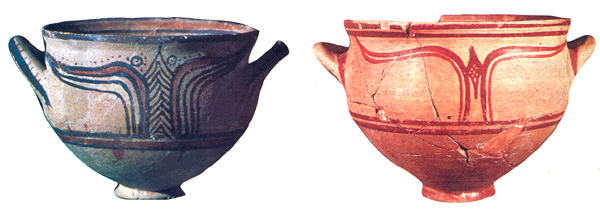Image Details

Courtesy of the Leon Levy Expediton to Ashkelon
Which is which? Nearly identical in form and decoration, these two pieces of painted pottery—one from the Philistine settlement at Ashkelon, dating to around 1100 B.C. (left); the other, a contemporaneous bowl from Cyprus—attest to the Philistines’ heritage. The bowl from Ashkelon, called a skyphos, is an example of a type of pottery known as Mycenaean IIIC:1b—locally made but clearly influenced by Aegean prototypes. Other examples have been found all over Palestine, but mainly at three of the Philistine Pentapolis sites: Ashkelon, Ashdod and Ekron. This type of pottery began to appear in Canaan only after the arrival of the Philistines.
